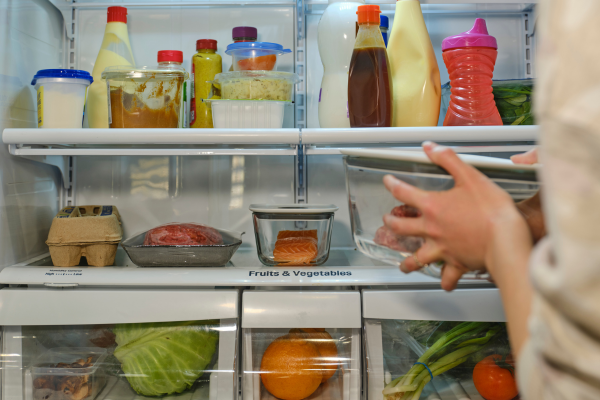Introduction:
A well-organized kitchen pantry not only makes meal prep easier but also enhances the overall functionality of your kitchen space. The pantry serves as the heart of your culinary haven, storing essential ingredients, spices, and supplies. However, maintaining an orderly pantry can be a challenge amid our busy lives. With strategic planning and simple organization tips, creating and sustaining a tidy kitchen pantry becomes an achievable goal. In this article, we’ll explore practical strategies and tips to help you maintain a well-organized pantry for a more efficient cooking experience.
Assess and Declutter:
The first step in achieving an organized pantry is to assess its contents and declutter. Remove all items from shelves, checking expiration dates and assessing their condition. Discard expired goods and donate unopened, non-perishable items that you won’t use. Group similar items together to see duplicates and prevent overbuying in the future. This decluttering process sets the stage for a more organized and functional pantry.
Categorize and Group Items:
Categorization is key to maintaining an organized pantry. Group items by type – such as canned goods, baking supplies, grains, spices, etc. – and store them together. Use baskets, clear containers, or labeled jars to separate and organize smaller items like spices or packets. Utilize shelf dividers or bins to keep categories separate and easily accessible. This grouping method streamlines your pantry, making it easier to find what you need while keeping everything neat and orderly.
Invest in Storage Solutions:
Maximize space and maintain organization by investing in storage solutions tailored to your pantry’s layout. Adjustable shelving, stackable containers, and drawer organizers optimize vertical space and keep items visible. Consider investing in clear, airtight containers for storing grains, cereals, pasta, and snacks. Transparent containers not only preserve freshness but also make it easier to identify contents at a glance, eliminating the need to rummage through shelves.
Utilize Vertical Space:
Make the most of your pantry’s vertical space by installing shelves, racks, or hooks on the inside of doors. Door-mounted racks are ideal for storing spices, oils, and small condiments, freeing up shelf space for larger items. Use vertical dividers or tension rods to create sections for baking sheets, cutting boards, or trays. By utilizing vertical space efficiently, you’ll expand storage capacity and improve accessibility within your pantry.
Maintain Regular Organization Routines:
Consistency is key to sustaining an organized pantry. Incorporate regular maintenance into your routine by setting aside time each month to reassess and tidy up. Check for expired items, rearrange as needed, and take inventory of supplies to create a shopping list. Additionally, encourage household members to follow the organization system to maintain the pantry’s orderliness consistently.
Labeling System:
Implement a labeling system to further streamline your pantry organization. Label containers, shelves, and baskets to clearly identify each item’s place. Use a label maker, chalkboard labels, or even masking tape and a marker for a cost-effective option. Clear labels eliminate confusion and make it easier for everyone to return items to their designated spots, ensuring a tidy pantry remains intact.
Rotation System for Stock:
Implementing a rotation system in your pantry helps ensure that older items get used first, minimizing waste and keeping your pantry fresh. When restocking groceries, place newer items behind older ones. This practice, known as FIFO (First In, First Out), helps maintain freshness and prevents items from languishing in the pantry, untouched until they expire.
Consider Zone Organization:
Divide your pantry into zones based on frequency of use and item categories. Create a “prime zone” for frequently used items like spices, oils, and snacks, placing them at eye level for easy access. Reserve lower shelves for heavier items or bulk purchases, keeping them within reach without strain. Utilize higher shelves for items used less often or for long-term storage, such as specialty baking ingredients or large serving platters.
Seasonal Adjustments:
Adapt your pantry organization according to seasonal needs. During holiday seasons or special occasions, you might need additional storage for baking supplies or festive decorations. Adjust shelf space accordingly to accommodate seasonal items without cluttering your regular pantry space. Utilize temporary storage solutions like labeled bins or baskets to keep these seasonal items organized and easily accessible when needed.
DIY Solutions and Personal Touches:
Explore do-it-yourself (DIY) solutions to tailor your pantry organization to your specific needs. Create custom labels using colorful markers or printed designs to add a personal touch to your storage containers. Utilize repurposed jars or containers for a more eco-friendly and cost-effective approach. DIY shelving or hanging solutions can also be crafted to maximize space and accommodate unique pantry layouts.
Mindful Shopping Habits:
Developing mindful shopping habits significantly impacts pantry organization. Before heading to the store, take inventory of what you already have to avoid unnecessary purchases or duplicates. Stick to a shopping list and refrain from impulse buys unless they complement your meal plans. By shopping intentionally, you’ll reduce clutter and ensure that your pantry remains well-organized with essentials tailored to your needs.
Regular Maintenance and Adaptation:
Pantry organization isn’t a one-time task; it’s an ongoing process that requires regular maintenance and adaptability. Schedule routine checks to reassess the organization system, making necessary adjustments based on changing needs or habits. As your cooking style evolves or family preferences shift, adapt the pantry organization accordingly to maintain its functionality and efficiency.
Seek Inspiration and Community Ideas:
Explore online resources, such as social media platforms or home organization websites, to gather inspiration and innovative ideas for pantry organization. Join online communities or forums dedicated to home organization to exchange tips, tricks, and experiences with like-minded individuals. Sharing ideas and seeking inspiration from others can offer fresh perspectives and creative solutions for your kitchen pantry.
Conclusion:
By incorporating these tips into your pantry organization routine, you’ll elevate the functionality and aesthetics of your space. A well-organized pantry not only simplifies meal preparation but also promotes a sense of order and efficiency within your home. Consistency, adaptability, and mindful practices will help you maintain a tidy and functional kitchen pantry that supports your culinary adventures.


